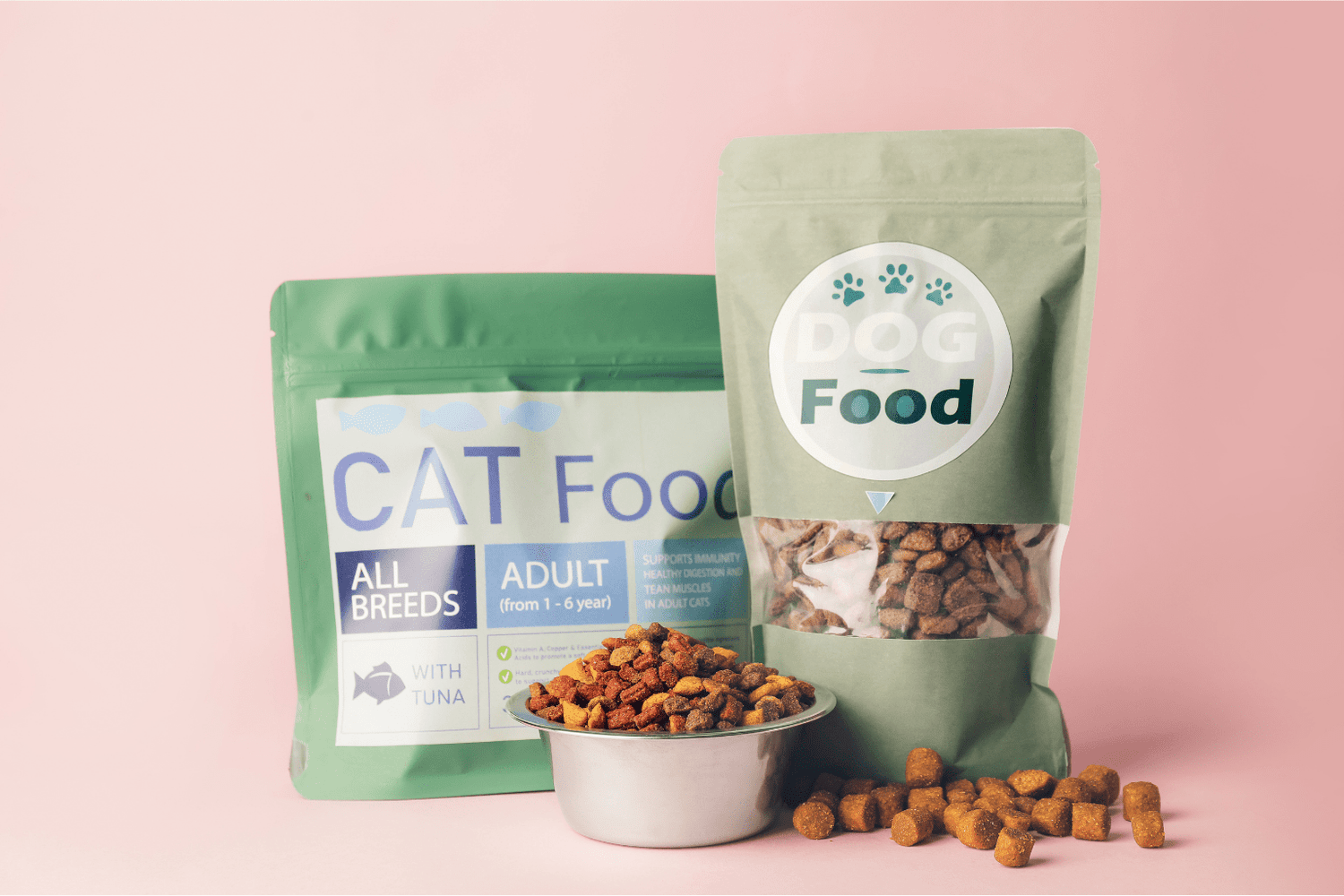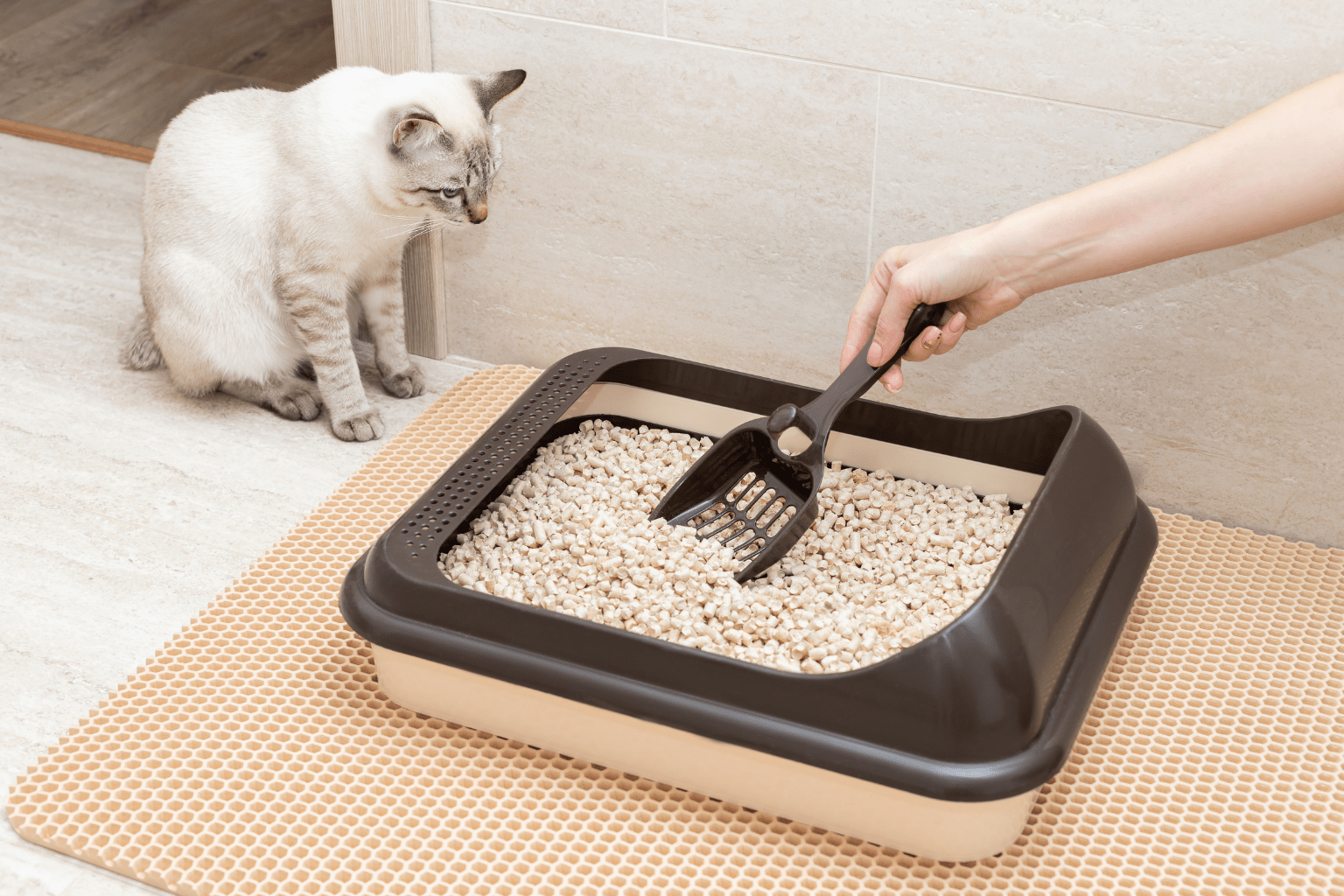Key Takeaways
- Choosing the right brands of pet food can significantly improve your pet's health and well-being.
- Switching to natural or holistic pet food formulas may enhance your pet's coat, energy, and digestion.
- Not all pet foods are created equal; selecting quality brands matters more than many pet owners realize.
- Positive changes in pets can occur quickly after changing to a better pet food brand.
Table of Contents
- Natural Pet Food Brands: Why Your Choice Matters More Than You Think
- What Counts as Pet Food: From Kibble to Raw
- Decoding Pet Food Labels: What Really Matters
- Dogs vs. Cats: Why Species-Specific Nutrition Matters
- How to Choose the Right Pet Food Brand: A Decision Blueprint
- Major Pet Food Brands Explained - Today's Market Leaders
- Comparing Pet Food Brands - Grain-Free, Premium, and Budget Options
- Regulation and Safety - How Pet Food Brands Meet Standards
- Smart Feeding - Calculating Portions and Safe Storage
- Troubleshooting - Common Food Brand Challenges and Solutions
- Troubleshooting, Common Food Brand Challenges (And Quick Solutions for Real Pet Homes)
- BestLife4Pets Supplements and Remedies, Complementary Care, Not Just Food
- Smart Feeding, Calculating Portions and Storing Pet Food Safely Across Top Brands
- Final Thoughts, How Our Pet Food Choices Build a Happier, Healthier Family
Natural Pet Food Brands: Why Your Choice Matters More Than You Think
When Rescue Rachel switched her senior shelter dog from a popular grocery store brand to a holistic formula, she didn't expect the transformation. Within two weeks, the dog's dull coat turned glossy, his energy returned, and his chronic digestive issues disappeared. This isn't magic, it's the power of choosing the right brands of pet food for your furry family member.
The pet food industry has exploded to over $50 billion in 2024, with thousands of brands competing for your trust. Yet most pet parents feel overwhelmed by marketing claims, confusing labels, and conflicting advice. The truth is, your pet's food directly impacts their happiness, energy levels, and longevity, making brand selection one of your most important caregiving decisions.
For dogs experiencing digestive upset or suspected parasites, consider the Dog De-Wormer Broad Spectrum as a gentle, natural way to support digestive wellness alongside your chosen food brand.
Why Brand Choice Matters: Unlike human food, pets eat the same formula daily for months or years. A poor-quality brand compounds nutritional deficiencies, while a well-formulated one supports optimal health from the inside out.
What Counts as Pet Food: From Kibble to Raw

Pet food encompasses any commercially prepared nutrition designed to meet your pet's daily dietary needs. This includes dry kibble, wet/canned varieties, raw frozen formulas, freeze-dried options, and semi-moist treats. Each format serves different purposes: wet food provides hydration for cats prone to urinary issues, while kibble offers convenience and dental benefits for busy pet parents.
The key distinction lies in processing methods and ingredient quality. Premium pet food brands use whole proteins, named meat meals, and minimal fillers, while budget options often rely on by-products and grain-heavy formulas. Feline Fiona discovered this firsthand when switching her chronically ill cat from dry kibble to a high-moisture, grain-free wet food, her kitty's symptoms improved within days.
For more insights on what to avoid when selecting food, see this helpful guide on brands of dog food to avoid.
| Food Type | Best For | Storage | Cost Range |
|---|---|---|---|
| Dry Kibble | Convenience, dental health | 4-6 weeks after opening | $ |
| Wet/Canned | Hydration, picky eaters | 2-3 days refrigerated | $$ |
| Raw/Freeze-dried | Allergies, maximum nutrition | Frozen until use | $$$ |
Decoding Pet Food Labels: What Really Matters
Pet food labels follow strict AAFCO (Association of American Feed Control Officials) guidelines, but marketing language can still mislead well-intentioned pet parents. The ingredient list appears in descending order by weight, meaning the first five ingredients comprise most of your pet's nutrition. Look for named proteins like "deboned chicken" or "salmon meal" rather than vague terms like "meat by-products."
The guaranteed analysis reveals minimum protein and fat percentages, plus maximum fiber and moisture content. However, these numbers don't tell the whole story, a food with 25% protein from quality sources outperforms one with 30% protein from low-grade meals. Holistic dog food brands typically provide transparency through their ingredient sourcing and manufacturing processes.
Top 3 Red Flags on Labels: Generic "meat meal" without species identification, artificial colors (pets don't care about kibble color), and excessive grain fillers in the first five ingredients.
Dogs vs. Cats: Why Species-Specific Nutrition Matters
Dogs are omnivores who can thrive on varied diets including vegetables and grains, while cats are obligate carnivores requiring specific nutrients only found in animal tissue. Cats need taurine for heart function, arachidonic acid for skin health, and higher protein levels than dogs. This fundamental difference explains why quality pet brands formulate separate recipes rather than offering "universal" pet food.
Age and health status further complicate nutritional needs. Senior dogs benefit from joint-supporting ingredients and reduced calories, while active puppies require higher fat content for energy. Golden-Years Gary learned this when his aging Lab's mobility improved after switching to a senior-specific formula with added glucosamine and omega fatty acids.
For more advice on supporting your older companions, check out these tips for taking care of your aging pets.
| Nutrient | Dogs (Adult) | Cats (Adult) | Why It Matters |
|---|---|---|---|
| Protein Minimum | 18% | 26% | Muscle maintenance, energy |
| Taurine | Not required | Essential | Heart and eye function |
| Carbohydrates | Beneficial | Minimal need | Energy source preference |
How to Choose the Right Pet Food Brand: A Decision Blueprint

Start by assessing your pet's specific needs: age, activity level, health conditions, and any food sensitivities. Consider your pet's current health status. Senior dogs may benefit from joint-supporting formulas, while cats with urinary issues need brands that promote proper pH balance.
Create a transition plan spanning 7-10 days. Mix 75% current food with 25% new brand for the first few days, gradually increasing the new food proportion. Watch for energy changes, coat shininess, and digestive responses. Golden-Years Gary tracked his Lab's mobility improvements after switching to a joint-focused formula, noting increased playfulness within two weeks.
Budget doesn't always dictate quality. Some premium brands of pet food offer exceptional nutrition per dollar, while others rely on marketing. Check the first five ingredients, they should reflect what your pet actually needs, not what sounds appealing to humans.
Major Pet Food Brands Explained - Today's Market Leaders
The pet food landscape divides into distinct categories, each serving different needs and budgets. Mass-market brands like other popular brands dominate grocery shelves through volume production and veterinary partnerships, offering consistent nutrition at accessible price points.
Specialty brands including other leading providers carved their niche by emphasizing natural ingredients and transparent sourcing. These companies typically avoid artificial preservatives and focus on whole food nutrition, appealing to health-conscious pet parents willing to invest more per meal.
Emerging natural-first brands continue disrupting traditional formulations. Many BestLife4Pets families pair these premium foods with our gentle pellet remedies, creating comprehensive wellness approaches that support their pets' unique needs without harsh chemicals or side effects.
Comparing Pet Food Brands - Grain-Free, Premium, and Budget Options
| Brand Category | Target Audience | Price Range | Key Features | Best For |
|---|---|---|---|---|
| Premium Natural | Health-focused families | $3-5 per lb | Whole ingredients, no fillers | Sensitive stomachs, allergies |
| Grain-Free | Allergy-prone pets | $2.50-4 per lb | Alternative carbs, high protein | Food sensitivities |
| Budget Friendly | Multi-pet households | $1-2 per lb | AAFCO compliant, consistent | Basic nutrition needs |
| Prescription | Medical conditions | $4-6 per lb | Therapeutic formulations | Kidney, heart, digestive issues |
Expensive doesn't automatically mean better. Third-party testing reveals that some mid-range pet food brands deliver superior digestibility compared to premium options. Focus on your pet's response rather than marketing claims.
Feline Fiona discovered this firsthand when her chronically ill cat thrived on a moderately-priced formula after rejecting several costly alternatives. The key lies in matching ingredients to your pet's specific digestive and nutritional requirements, not price tags.
For a scientific perspective on pet food digestibility and quality, see this peer-reviewed study on pet food evaluation.
Regulation and Safety - How Pet Food Brands Meet Standards

AAFCO (Association of American Feed Control Officials) sets nutritional standards that reputable brands of pet food must meet to claim "complete and balanced" nutrition. This certification requires feeding trials or nutrient analysis proving the food supports pets through specific life stages.
FDA oversight focuses on safety, labeling accuracy, and contamination prevention. When recalls occur, brands must immediately notify distributors, remove affected products, and identify contamination sources. Quality manufacturers maintain detailed batch records enabling swift, targeted recalls rather than broad market withdrawals.
Stay informed by signing up for FDA pet food recall alerts and checking expiration dates monthly. Store opened dry food in airtight containers and use within six weeks to maintain nutritional integrity and prevent pest contamination.
Smart Feeding - Calculating Portions and Safe Storage
Proper portions depend on your pet's weight, age, activity level, and the specific brand's calorie density. A moderately active 50-pound dog typically needs 2-3 cups of dry food daily, but calorie-dense formulas require smaller portions. Always start with manufacturer guidelines, then adjust based on your pet's body condition.
Storage significantly impacts food quality and safety. Dry food maintains peak nutrition for 4-6 weeks after opening when stored in cool, dry conditions. Wet food requires refrigeration within two hours and consumption within 3-4 days. Raw diets need immediate freezing and careful thaw planning.
Use airtight containers with secure lids, date all opened packages, and rotate stock using oldest products first. These simple steps prevent spoilage, maintain nutritional value, and protect your investment in quality pet food brands.
Troubleshooting - Common Food Brand Challenges and Solutions
Food refusal often signals texture preferences rather than taste issues. Some pets prefer smaller kibble sizes, while others need wet food mixed with dry. If your pet suddenly stops eating a familiar brand, check for batch changes, storage issues, or underlying health concerns requiring veterinary attention.
Digestive upsets during brand transitions typically resolve with slower switching schedules. Extend the changeover to 14 days for sensitive pets, maintaining the 25% increment rule but allowing more time between increases. Rescue Rachel successfully transitioned a shelter cat with chronic diarrhea using this patient approach combined with supportive care.
Troubleshooting, Common Food Brand Challenges (And Quick Solutions for Real Pet Homes)

Even the best brands of pet food can present challenges during transitions or daily feeding. The most common issues include outright food refusal, digestive upset, and gradual appetite decline, problems that often resolve with simple adjustments rather than complete brand abandonment.
Food refusal typically stems from texture or flavor differences. Mix the new food with familiar treats or a small amount of low-sodium broth to bridge the gap. For persistent picky eaters, try serving smaller portions at regular intervals rather than leaving a full bowl out all day.
Digestive issues during brand transitions require immediate attention. If loose stools or vomiting occur, return to the previous food immediately and restart the transition process more gradually, extending each mixing phase to 4-5 days instead of 2-3. Golden-Years Gary successfully managed his Lab's sensitive stomach by maintaining the 25% increment rule but allowing more time between increases.
Batch inconsistencies occasionally occur even with premium brands. If your pet suddenly refuses a food they previously enjoyed, check the manufacturing date and contact the brand directly. Most reputable companies will replace questionable batches and investigate production issues.
For additional tips on supporting your pet's health and happiness, browse our pet blog tips section.
BestLife4Pets Supplements and Remedies, Complementary Care, Not Just Food
Quality nutrition forms the foundation, but sometimes our pets need additional support for specific health challenges. BestLife4Pets natural pellet remedies work alongside your chosen food brand to address joint discomfort, digestive issues, anxiety, and other common concerns without the side effects of harsh medications.
Our tasteless pellets integrate seamlessly into any feeding routine, simply sprinkle them over your pet's regular food or offer them as treats. Bailey, a 9-year-old Golden Retriever, experienced noticeable joint relief within days while continuing her favorite grain-free kibble. Her family didn't need to disrupt her established eating habits to provide targeted support.
Popular Remedy Pairings:
- Joint Support, Perfect alongside any kibble for active or senior pets
- Digestive Aid, Complements sensitive stomach formulas during transitions
- Anxiety Relief, Works with any food to ease stress-related eating issues
- Skin & Coat Support, Enhances the benefits of omega-rich foods
Unlike liquid supplements that can alter food taste or texture, our pellet format preserves your pet's normal eating experience while delivering gentle, effective support. This approach allows you to maintain your preferred food brand while addressing specific health needs naturally.
For further reading on pet nutrition and health, you may find this comprehensive review of animal nutrition helpful.
Smart Feeding, Calculating Portions and Storing Pet Food Safely Across Top Brands
Proper portioning varies significantly between pet food brands due to differences in calorie density and nutrient concentration. Premium foods often require smaller serving sizes than budget options, making feeding guidelines on each package essential starting points rather than universal rules.
Portion calculation should account for your pet's age, activity level, and body condition. A 50-pound active dog might need 2.5 cups of one brand but only 2 cups of a more calorie-dense formula. Monitor your pet's weight monthly and adjust portions accordingly, ribs should be easily felt but not visible.
Storage practices directly impact food safety and nutritional value. Dry kibble maintains peak freshness for 6 weeks after opening when stored in airtight containers away from heat and humidity. Always transfer food using clean scoops and mark containers with opening dates to track freshness.
Wet food requires refrigeration within 2 hours of opening and should be consumed within 3-5 days. Freeze-dried and raw foods demand strict temperature control, never leave them at room temperature for more than 30 minutes during serving.
Final Thoughts, How Our Pet Food Choices Build a Happier, Healthier Family

Choosing among the countless brands of pet food isn't about finding perfection, it's about discovering what nurtures your specific pet's health, happiness, and unique needs. Every successful feeding journey combines quality nutrition with attentive observation and gentle adjustments along the way.
The best food brand is the one your pet thrives on consistently, whether that's a premium grain-free formula, a veterinary prescription diet, or a trusted mainstream option. When combined with natural remedies for targeted support, even simple food choices become powerful tools for long-term wellness.
Remember that food transitions, digestive challenges, and changing nutritional needs are normal parts of pet parenthood. Trust your observations, maintain open communication with your veterinary team, and don't hesitate to reach out to our BestLife4Pets community for support and guidance.
Your pet's bowl represents more than daily nutrition, it's an opportunity to show love, support their body's natural healing abilities, and invest in countless more years of tail wags, purrs, and joyful moments together.
Frequently Asked Questions
Why is choosing the right brand of pet food so important for my pet's health and well-being?
Choosing the right pet food brand matters because pets eat the same formula daily, so quality directly affects their overall health, energy, and digestion. A well-formulated brand supports your pet’s body from the inside out, helping maintain a shiny coat, steady energy, and better digestion over time.
What are the main differences between natural or holistic pet food brands and conventional options?
Natural or holistic pet food brands focus on high-quality, species-specific ingredients and avoid unnecessary fillers or artificial additives. These formulas often support digestion and coat health better than conventional options, which may rely on lower-quality ingredients and more chemicals.
How do different types of pet food, such as kibble, wet, and raw, affect my pet's nutrition and health?
Kibble is convenient and shelf-stable but can vary widely in quality. Wet food offers higher moisture content, which can help hydration, especially for cats. Raw diets aim to mimic natural feeding but require careful handling to ensure safety. Each type affects digestion, hydration, and nutrient absorption differently, so choosing what suits your pet’s needs is key.
What should I look for when reading pet food labels to ensure I'm selecting a high-quality brand?
Look for clear ingredient lists with recognizable, whole-food sources and species-appropriate formulas. Avoid vague terms and excessive fillers. Transparency about sourcing and nutritional adequacy statements can also help you trust the brand’s commitment to your pet’s health.



